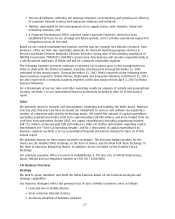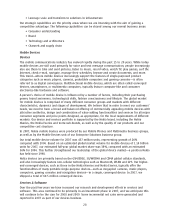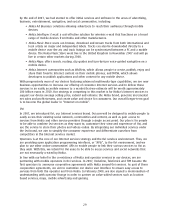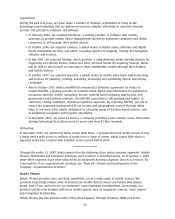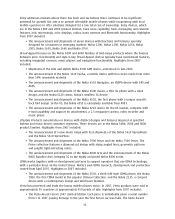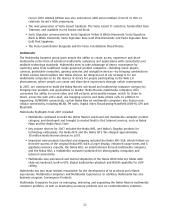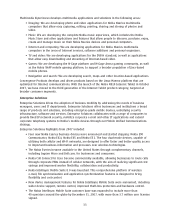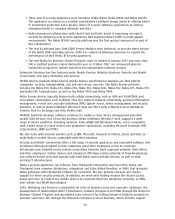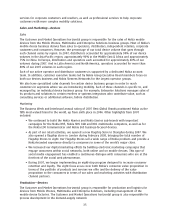Nokia 2007 Annual Report Download - page 38
Download and view the complete annual report
Please find page 38 of the 2007 Nokia annual report below. You can navigate through the pages in the report by either clicking on the pages listed below, or by using the keyword search tool below to find specific information within the annual report.Design—Devices
We take a human approach to designing mobile devices, with the goal of creating stylish products
that work just the way people like them to. This ethos is central to our design work and brand.
Our design process is influenced by the consumer and their behavior—how they want a mobile device
to look, function and fit into their lifestyle. We focus on beautiful simplicity—sleek design and ease of
use, relevance for specific consumers and local tastes and creating a joy of use.
We have a multidisciplinary design team of approximately 300 psychologists, researchers,
anthropologists and technology specialists representing more than 30 different nationalities. Based in
China, Europe, Latin America, Japan, India, the US and elsewhere, the team conducts indepth research
and analysis of consumer trends and behavior, as well as studies new technologies, materials, shapes
and styles.
Technology, Research and Development—Devices
Our devices business research and development takes place within the Technology Platforms
horizontal group and within the three device business groups. Our technology strategy for our devices
business is also supported by the Nokia Research Center and other Nokiawide horizontal units under
the leadership of Nokia’s Chief Technology Officer.
Technology Platforms
Technology Platforms is responsible for the competitiveness of Nokia technology assets for our
devices business. It supports our overall technology management and development by delivering
leading technologies and platforms to our device business groups as well as to external customers.
Technology Platforms achieves this through deployment of our own R&D resources, as well as close
cooperation with leading software and technology companies.
The two major areas in our technology development are chipset platforms and software.
Chipset platforms
A chipset platform comprises integrated circuits designed to work as a unit and perform specific
functions in a mobile device. A key component of the chipset is the modem, responsible for
converting the digital language of a chip to the analog language of radio. This allows one device to
communicate with another over radio signals.
In August 2007, we announced that we were revising our chipset strategy and introducing a
multisourcing model for our chipsets. Until then, our chipset R&D and design work had mainly been
carried out inhouse, while chipset manufacturing had been concentrated with one external supplier.
Under the revised strategy, we have discontinued parts of our own chipset R&D and have expanded
our use of commercially available chipsets. We are now working with four chipset suppliers: Texas
Instruments continues to be a broadscope supplier across all product tiers; in addition, Infineon
Technologies is a supplier at the entry level; Broadcom in the midrange; and STMicroelectronics at
the highend.
We are, however, continuing to develop our leading modem technology, which includes protocol
software and related digital design for multiprotocol modems. Modem technology is an area where
we believe we have a competitive advantage through our strong experience, execution capability and
intellectual property rights position. Under our revised chipset strategy, we will license our modem
technology to chipset manufacturers who will use it in the chipsets they develop and produce for
Nokia and—if they so decide—in the chipsets they produce for the open market.
The revised chipset strategy is aimed at increasing the efficiency of our research and development
efforts by allowing Nokia to leverage external innovation through working with the best partner in a
specific chipset development area, and by freeing our own R&D resources to focus on our core
competencies in modem development and other areas central to Nokia’s growth strategy, such as
37


